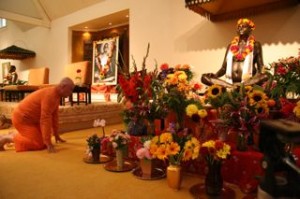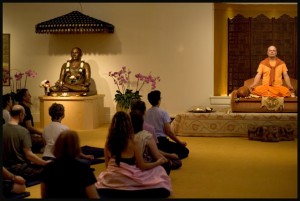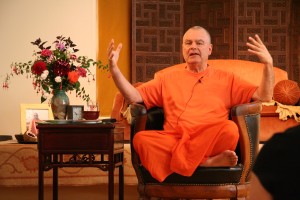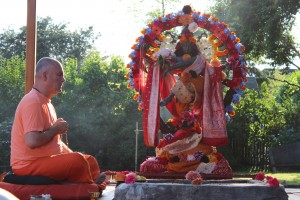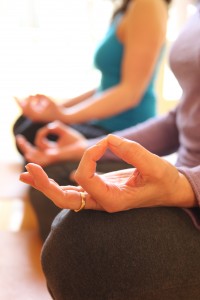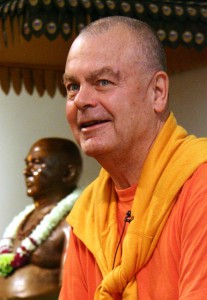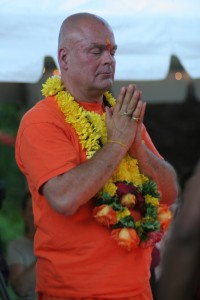In the Vedic period, the havan (also called the homa, the yajna, and the agnihotra) was the practice by which people re-established their alignment with the natural order of the whole universe. In this practice, they aligned themselves internally. They then aligned themselves with all the forces that operated in their environment for the purpose of sustaining balance and harmony for the benefit of the whole: the individual, the family, and the community.
The fire ceremony had two aspects to it. One is regular and private to the family. I have friends in Kerala, in South India, in whose house the fire has not gone out for more than 1,000 years. That, to me, is just amazing.
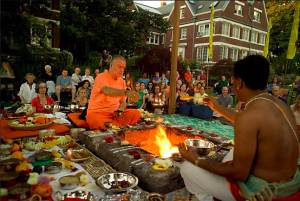 The second function of the havan is public. As an example of that, the oldest continuous yajna that I know of happens now in South India, but not very regularly. The people in the village where it happens claim that the ceremony has been going on for 8,000 years without interruption. The altar has three fire pits and is constructed in the shape of a bird, using 10,008 bricks which are specially made for the occasion–one brick for each line in the Rig Veda. The whole community builds the altar, covers it with thatch, and they meet for eight days, dawn til dusk, and chant the mantras together. They offer ghee, grains, nuts, and fruit into the fire. There is a very specific aesthetic quality to the whole experience because there is the fire, the offerings, the chanting and the smoke. All of the senses become completely engaged, and the ordinary, discursive, wandering mind becomes disabled.
The second function of the havan is public. As an example of that, the oldest continuous yajna that I know of happens now in South India, but not very regularly. The people in the village where it happens claim that the ceremony has been going on for 8,000 years without interruption. The altar has three fire pits and is constructed in the shape of a bird, using 10,008 bricks which are specially made for the occasion–one brick for each line in the Rig Veda. The whole community builds the altar, covers it with thatch, and they meet for eight days, dawn til dusk, and chant the mantras together. They offer ghee, grains, nuts, and fruit into the fire. There is a very specific aesthetic quality to the whole experience because there is the fire, the offerings, the chanting and the smoke. All of the senses become completely engaged, and the ordinary, discursive, wandering mind becomes disabled.
For each of the sensory domains, the resonance of the experience permeates us and is intended to elevate us to a different level of experience of our own lives. So this practice, the ritual offerings, the mantra, the whole aesthetic sensibility, is intended to lift the practitioner and those attending into an ecstatic state in which a vision of the higher context in which each of us functions as human beings is accessible to us. It is a vision that we do not ever encounter in our ordinary lives.
In other words, the whole point of yoga is to achieve a state that transcends thought and feeling and makes accessible to us the direct experience of where we come from and why we’re here. That experience is so intimate that it transcends even the most intimate of our personal experiences.
A secondary aspect of that experience, seeing the larger context, we become aware of the more sophisticated reality in which we operate. We begin to understand that we are not the only sentient beings that are present here, and further, although we imagine we might be, we are not at the top of the food chain. In having the ecstatic vision of our own ultimate reality, we also encounter the spiritual beings that have a profound influence on all of our lives.

